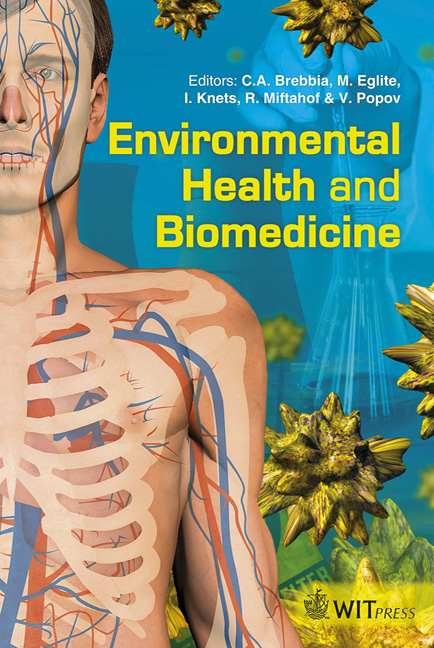Vegetation Fires And Release Of Radioactivity Into The Air
Price
Free (open access)
Transaction
Volume
15
Pages
7
Page Range
3 - 9
Published
2011
Size
2,930 kb
Paper DOI
10.2495/EHR110011
Copyright
WIT Press
Author(s)
F. P. Carvalho, J. M. Oliveira & M. Malta
Abstract
Naturally-occurring radionuclides, such as those of the uranium and thorium series, as well as artificial radionuclides, are accumulated in plants generally in low concentrations. Summer vegetation fires release these natural and man-made radionuclides into the atmosphere. Concentrations of uranium isotopes 238U, 235U, 234U, 232Th, 230Th, 226Ra, 210Pb and 210Po were measured in smoke from wild vegetation fires. It is shown that radionuclide concentrations in smoke particles are enhanced about 100 times in comparison with the vegetation of the area and with reference aerosols. Smoke particles were particularly enriched in 210Po, and displayed 210Po/210Pb activity concentration ratios always above unity and up to 12, while in common aerosols 210Po/210Pb is always <1. Inhaled smoke particles from vegetation and forest fires may contribute to enhanced radiation doses in the human lung. Keywords: naturally-occurring radionuclides, polonium, radioactivity in plants, vegetation fires. 1 Introduction Every year, especially in the inter-tropical and temperate regions a high number of wild forest and vegetation fires causes loss of property and natural resources. The wild vegetation and forest fires release into the atmosphere large quantities of volatilized substances and particulate matter, aggravated by those from man made fires either for combustible control, agriculture fires, and plant biomass burning for heat production, all of them with an impact on atmospheric chemistry and a potential impact on climate change [1, 2]. Recent studies have increasingly focused on the impact of fire emissions on human health andKeywords
naturally-occurring radionuclides, polonium, radioactivity in plants, vegetation fires





